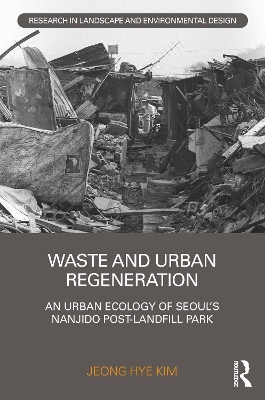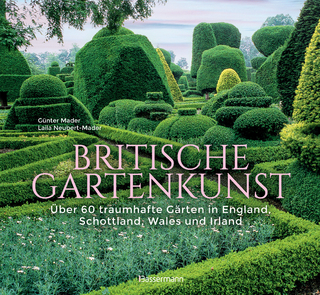
Waste and Urban Regeneration
Routledge (Verlag)
978-0-367-35640-8 (ISBN)
The study analyses the urban ecological meanings of the site’s two distinct forms by consolidating them with the Lefebvrian urban theory and relational ecological theories. This book looks at environmental transformations and their link to South Korea’s political and economic changes; how Seoul City controlled waste populations, the borderline characterisations of the inhabited landfill and its community, the regeneration of the landfill into the post-landfill park and site-specific artworks which explored the conflict between the invisible presence of the landfill’s garbage and its history.
As one of the first accounts of a landfill and landfill-turned-park of South Korea, this study is a must-read for academics and researchers interested in waste management, ecology, landscape theory and history.
Jeong Hye Kim is visiting professor of Seoul National University of Science and Technology with a primary research focus on architectural design and art in urban settings. Her subjects of research interest are the political and socio-economic relationship with urban environment, post-traumatic historical spaces, sense of place[less]ness and ecological equilibrium. Translations include Hal Foster’s The Art-Architecture Complex and Charles Jencks and Nathan Silver’s Adhocism.
Introduction
Chapter 1. Transformations of Nanjido
1.1 Pre-landfill period (1945–1977): nature
Appropriation of natural environment
Idealisation of nature
1.2 Landfill period (1978–1992): waste
Post-industrial age and landfills of Seoul
Environmental conditions of Nanjido Landfill
Environmental and social ecologies of Nanjido Landfill
1.3 Post-landfill period (1993–present): regeneration
Post-landfill vision and the neoliberal economic turn
Nanjido Post-Landfill Park: cultural and environmental value creation
The Nanji Golf Course debate: ecology and class issues
Chapter 2. Sanitary Management in Post-war Seoul
2.1 Sanitation as morality and ideology
Sanitation as morality for industrial and military forces
Sanitation as anti-communist ideology
2.2 Control of garbage collectors: physical sanitary management
Ragpickers in post-war Seoul
Institutional control of garbage collectors
Market control of garbage collectors
2.3 DDT: symbolic sanitary management
The Korean War and DDT
A belief system of fumigation
2.4 Nanjido Landfill: spatial sanitary management
The waste management sites and waste itself
Fumes and borders
Chapter 3. Nanjido Landfill as Human Habitat
3.1 Housing in Nanjido Landfill
Self-help housing (1978-1984)
Collective housing complex (1984-2001)
3.2 Adequate and sustainable housing
Adequate housing
Sustainable housing
3.3 Garbage collecting in Najido landfill
Recycling: assimilation
Scavenging: disruption
3.4 Imaginaries of Nanjido Landfill
Fear and threat
Subversive zone
Chapter 4. From Landfill to Post-Landfill Park
4.1 The building of Nanjido Post-Landfill Park
Post-landfill plans
Case studies for the post-landfill park
4.2 Nanjido Landfill’s regeneration
Detoxification: leachate and gas treatments
Aestheticisation: deodorisation and planting
4.3 The global style of parks
US style and global style of parks
Nanjido Post-Landfill Park as a global style of parks
4.4 Global economy and environmentalism
Environmentalism in the global economic system of South Korea
The South Korean middle class, ‘the public’ and the environmental concern
Nanjido Post-Landfill Park for ‘the public’
Chapter 5. Art: Disruption of Nanjido Post-Landfill Park
5.1 Unease and placelessness
The sense of unease
Place and placelessness
5.2 Artistic engagement with the urban space
Documentary photographs on the landfill
Place and memory-image
5.3 Artistic exploration of Nanjido Post-Landfill Park
SeMA Nanji Residency
Site-specific art on Nanjido Post-Landfill Park: embodying the past-present
Conclusion
| Erscheinungsdatum | 24.05.2021 |
|---|---|
| Reihe/Serie | Routledge Research in Landscape and Environmental Design |
| Zusatzinfo | 4 Tables, black and white; 9 Line drawings, black and white; 30 Halftones, black and white; 39 Illustrations, black and white |
| Verlagsort | London |
| Sprache | englisch |
| Maße | 156 x 234 mm |
| Gewicht | 521 g |
| Themenwelt | Sachbuch/Ratgeber ► Natur / Technik ► Garten |
| Naturwissenschaften ► Biologie ► Ökologie / Naturschutz | |
| Technik ► Architektur | |
| Technik ► Umwelttechnik / Biotechnologie | |
| ISBN-10 | 0-367-35640-6 / 0367356406 |
| ISBN-13 | 978-0-367-35640-8 / 9780367356408 |
| Zustand | Neuware |
| Haben Sie eine Frage zum Produkt? |
aus dem Bereich


